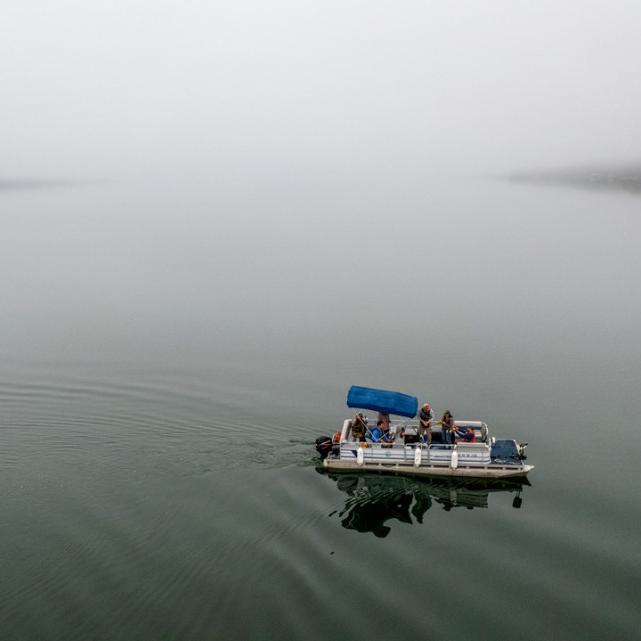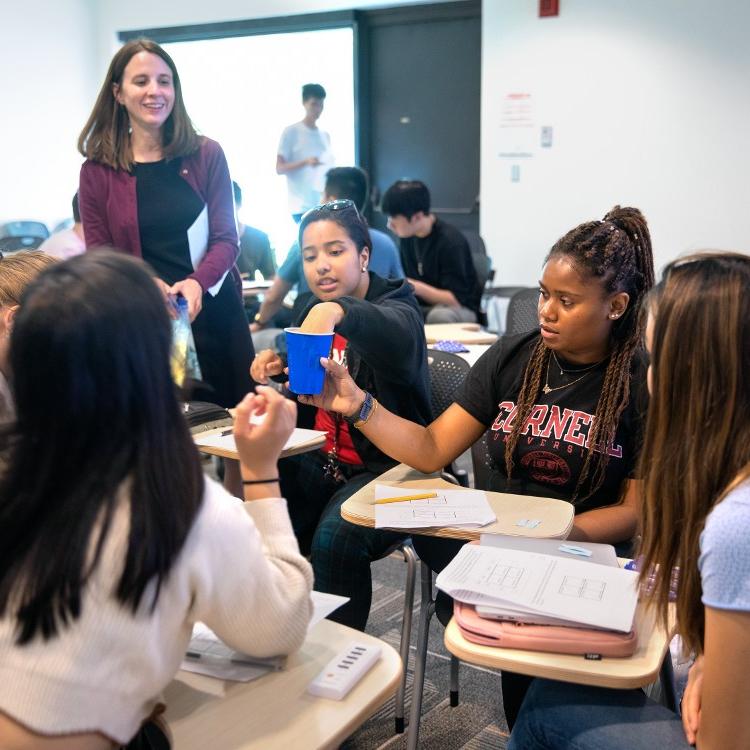Invasive round goby fish have impacted fisheries in the Great Lakes and the Finger Lakes by competing with native species and eating the eggs of some species of game fish.
But the camouflaged bottom dwellers can be difficult to find and collect – especially when they first enter a new body of water and their numbers are low and they might be easier to remove.
In a proof-of-principle study, Cornell researchers describe a new technique in which they analyzed environmental DNA – or eDNA – from water samples in Cayuga Lake to gather nuanced information about the presence of these invasive fish.
The study, “Nuclear eDNA Estimates Population Allele Frequencies and Abundance in Experimental Mesocosms and Field Samples,” was published Jan. 12 in the journal Molecular Ecology.
While eDNA techniques have been increasingly studied for the last decade, previous methods typically focused on whether a species was present in an ecosystem.
“With these new advancements to eDNA methods, we can learn not only which invasive species are present in the environment, but because we identify the genetic diversity in the samples, we can also predict how many individuals there are and possibly where they came from,” said Kara Andres, the paper’s first author and a graduate student in the lab of co-author David Lodge, professor of ecology and evolutionary biology in the College of Agriculture and Life Sciences (CALS) and the Francis J. DiSalvo Director of the Cornell Atkinson Center for Sustainability.
“For the first time, we demonstrate that there is sufficient genetic information in environmental samples to study the origins, connectivity, and status of invasive, elusive, threatened or otherwise difficult to monitor species without the need for direct contact,” added Jose Andrés, senior research associate in the Department of in CALS and a senior author of the study.
Since the method provides a genetic signature of individuals in a sample, scientists might be able to pinpoint where they came from by matching their DNA with populations from other areas.
“We would be able to tell genetically if round gobies were introduced by ships from Europe, which is how they originally got to the Great Lakes, or by some other means of introduction. Knowing this information might be helpful if we hope to stem new introductions at early stages,” Kara Andres said.
In addition, knowing the genetic diversity of species could prove useful in conservation efforts; low genetic diversity can indicate a dwindling or vulnerable population that requires managing its genetics.
“In the near future, this type of technique is likely to revolutionize how environmental and conservation management agencies monitor wild populations,” Jose Andrés said.
The researchers conducted controlled experiments using small artificial environments – water-filled bins with one, three, five or 10 gobies in them. After collecting genetic information from all the gobies, they took water samples from each bin to see if they could match DNA from the samples with individuals in the bins. They also tried to estimate the number of fish in each bin, based on the water sample alone. They were successful in both instances, Kara Andres said.
The researchers further validated their methods in Cayuga Lake, where they found high numbers of gobies, especially in shallow areas.
“This sensitive approach,” Kara Andres said, “may overcome many of the logistical and financial challenges faced by scientists and conservation managers studying these species, allowing precious resources to be best allocated for improving conservation outcomes.”
Suresh Sethi, an assistant professor in the Department of Natural Resources and the Environment in CALS, is a co-author of the study.
The study was funded by the National Science Foundation and the U.S. Department of Defense. Photo of Round Goby by E. Engbretson, USFWS/Public domain.







